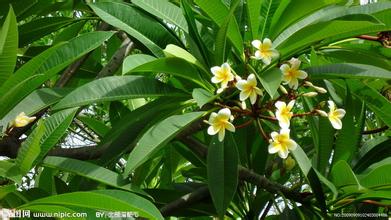Crystallization-Study of Exodus (3)
Message Twelve
The Incense
Opening Word of the Prophesying Meeting
Readingthe verses in each day.
Reading the main points in the outlines.
Pray-reading the verses:
And Jehovah said to Moses, Take fragrant spices-stacte and onycha and galbanum-fragrant spices with pure frankincense; there shall be an equal part of each; And you shall make of it incense, a perfume according to the perfumer’s art, seasoned with salt, pure and holy — Exo. 30: 34~35.
…each having a harp and golden bowls full of incense, which bowls are the prayers of the saints — Rev. 5:8.
Word of Appetizer
Have you ever paid careful attention to these two pictures in Exodus 30, the one of the ointment and the other of the incense? What is the significance of these pictures?
The significance here is that of two-way traffic, the coming and the going. As we have pointed out, the ointment is coming to us, and the incense is going to God. Christ as the Spirit coming to us is the ointment, and Christ ascending from us to God is the incense. The ointment is toward us; the incense is toward God. The ointment is for us to enjoy, and the incense is for God’s enjoyment.
Spiritual Burden
We need to have the burning and the ascending both from the bronze altar and from the golden incense altar; when we are one with the Lord at the incense altar, interceding for others and for the Lord’s interests, our prayer is a fragrant incense to God.
Concluding Word of the Prophesying Meeting
The Revelation of the Truth
The holy anointing oil signifies Christ as the all-inclusive Spirit coming to us from God, whereas the incense signifies Christ going to God from us; this is a divine traffic in two directions.
The incense consisted of five ingredients: The three spices (stacte, onycha, and galbanum) and the frankincense are seasoned with salt.
The Experience of Life
Our prayer needs to be “salted” by the cross so that all the impurity and bias within us may be killed.
At the bronze altar we have the sweetness of Christ in His death for our redemption, termination, and replacement; at the golden incense altar we have the sweetness of Christ in His resurrection and ascension for our acceptance.
Practice and Application
When we pray at the golden incense altar, there should be neither strange fire—some kind of motive that is natural, nor strange incense—prayer that is not related to Christ in our prayer.
When we are one with the Lord at the incense altar, interceding for others and for the Lord’s interests, our prayer is a fragrant incense to God.
Using Key Verses to Have a Bird’s-Eye View over the Whole Outlines
Key Verses (1)
And Jehovah said to Moses, take fragrant spices-stacte and onycha and galbanum-fragrant spices with pure frankincense; there shall be an equal part of each; and you shall make of it incense, a perfume according to the perfumer’s art, seasoned with salt, pure and holy—Exo. 30:34~35.
The Incense Consisted of Five Ingredients
II. The incense consisted of five ingredients: the three spices (stacte, onycha, galbanum) and the frankincense are seasoned with salt:
• The three spices signify the Triune God in resurrection, and the addition of pure frankincense, making the number of ingredients four, signifies the humanity of Christ.
• Each of the three spices signifies the death of Christ.
• The fourth ingredient, frankincense, is a white resinous gum, signifying the sweet resurrection of Christ. Salt signifies the killing power and preserving power of Christ’s death.
• Making the ingredients five, the number five signifiesresponsibility .
Key Verses (2)
… each having a harp and golden bowls full ofincense , which bowls are the prayers of the saints—Rev. 5:8.
nd another Angel came and stood at the altar, having a golden censer , and much incense was given to Him to offer with the prayers of all the saints upon the golden altar which was before the throne. And the smoke of the incense went up with the prayers of the saints out of the hand of the Angel before God—Rev. 8:3~4.
Incense Signifies Our Prayer
In both the Old Testament and the New Testament, incense signifies our prayer:
• The incense refers to the resurrected and ascended Christ with all His work, fruits, and merit.
• In Revelation 5:8 the bowls are the saints’ prayers, whereas the incense is Christ added to the saints’ prayers.
• In 8:3 incense signifies Christ with all His merit added to the prayers of the saints so that the saints’ prayers offered upon the golden altar might be acceptable to God.
Key Verses (3)
And with it you shall anoint the Tent of Meeting and the Ark of the Testimony, and the table and all its utensils, and the lampstand and its utensils, and the altar of incense, and the altar of burnt offering with all its utensils, and the laver and its base—Exo. 30:26~28.
At Your two altars even the sparrow has found a home; / And the swallow, a nest for herself, / Where she may lay her young, / O Jehovah of hosts, my King and my God—Psa. 84:3.
The Two Altars—the Bronze Altar and the Golden Incense Altar
IV. The two altars—the bronze altar and the golden incense altar—are closely related in our spiritual experience:
• The two altars are connected by the anointing, the blood of the sin offering, the fire that burned the offerings.
• We need to have the burning and the ascending both from the bronze altar and from the golden incense altar.
• When we pray at the golden incense altar, there should be neither strange fire nor strange incense in our prayer .
Prophesying Topics—Twelve Topics per Week
D1
T1 The anointing oil is Christ as God coming to us from God, and the incense is Christ going from us to God. (Exo. 30:23-25, 35)
(Please illustrate the divine traffic in two directions between God and us from the spiritual significances of the holy anointing oil and the incense.) (Please refer to the Outline I)
T2 The ointment is Christ for us; the incense is Christ for God (Exo. 30:8)
(Please use experience to explain that the ointment is for us to enjoy, and the incense is for God’s enjoyment.)
D2
T1 The five ingredients of the incense: the three spices and the frankincense are seasoned with salt (Exo. 30:34-35)
(Please explain the significances of the five ingredients of the incense.) (Please refer to the Outlines II, A, B, C, D)
T2 With the ointment and incense we see the Triune God, divinity, humanity, and Christ’s death and resurrection (Exo. 30:23-25, 34-35)
D3
T1 The significance of the type of the seasoning of the four ingredients of the incense with salt (Exo. 30:35-36) (Please refer to the Outlines II, D, E)
T2 How should we apply the cross of Christ to experience the killing death of Christ in our prayer (Mark 9:50) (Please refer to the Outline II, E)
D4
T1 The significance of what the incense and the smoke of the incense signify (Rev. 8:3-4) (Please refer to the Outline III)
T2 How can we experience Christ as the incense with the smoke that rises in our prayers? (Rev. 8:3-4)
D5
T1 The two altars—the bronze altar and the golden incense altar— are connected by the anointing, the blood, and fire (Exo. 30:26-28; Lev. 4:7; 16:12)
(Please refer to the Outline IV, A)
T2 From both the burning on the offering altar and from the burning on the incense altar a sweet savor ascended to God for His satisfaction (Lev. 1:17; 16:12-13)
(What are the differences between these two kinds of burnings?)
(Please refer to the Outline IV, B)
D6
T1 God requires man to worship Him through an altar and with God requires man to worship Him through an altar and with a sacrifice. What does this reveal to us? (Exo. 20:24-26)
T2 How should we pray at the incense altar? (Lev. 10:1; Exo. 30:9a)
(Please refer to the Outline IV, C)



